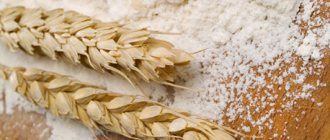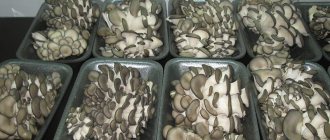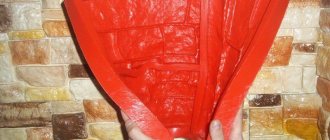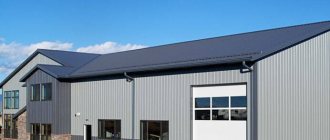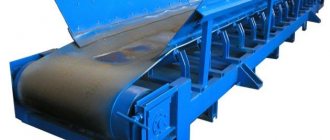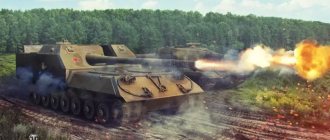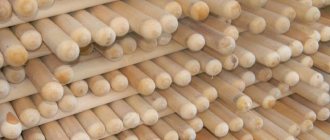Expanded clay concrete blocks are a building material that has many advantages. These include:
- excellent heat and sound insulation properties,
- frost resistance,
- durability,
- light weight,
- low cost, and others.
Wall elements made of expanded clay concrete block
Therefore, setting up a mini-factory for their production is considered a very profitable business idea.
Technical characteristics of expanded clay concrete blocks
This building material is endowed with great strength. In tests, expanded clay concrete showed that it can withstand loads of up to 20 MN/m². Depending on the strength, there are brands of the following modifications: 100, 150, 200.
Expanded clay concrete is an excellent heat insulator. It is resistant to fire, water, (moisture absorption is no more than 7%). It is also frost-resistant and provides good sound insulation.
Buying building material is the simplest solution, but it will require considerable funds. To save money, you can organize the production of expanded clay concrete blocks yourself. This can be done right on the construction site. In addition to savings, in-house production is justified by the fact that you can be confident about the quality of the products.
Transportation and storage conditions
For transportation and delivery of blocks to construction sites, special Euro pallets are required that prevent damage to the material. Expanded clay concrete products are delivered to their destination covered with plastic film. If long-term storage is required for building materials, a specially designated place with good ventilation and absence of dampness will be required . Outdoors, blocks can be stored on specially designed pallets with a tarpaulin cover. It is very important to prevent moisture from getting on the blocks so that their quality does not decrease during storage.
The production process and modern equipment make it possible to produce both hollow and monolithic products. The latter, due to their higher strength, are intended for laying the foundation of structures. Elements with voids are used for wall masonry.
Advantages of expanded clay blocks
This material, compared to foam and aerated concrete, has the following advantages:
- Competitive price.
- Water resistance and constant moisture content (ranging from 6 to 10%).
- Thermal conductivity.
- Resistant to temperature changes and frost.
- Fire resistance.
- Excellent vapor permeability, which allows you to regulate the level of air humidity in the house.
- Resistant to rust and rot.
- The absence of aggressive substances that cause corrosion of metal parts.
- Excellent thermal insulation.
- Walls made from these blocks are simply lined with various finishing materials.
- They are not susceptible to fungi, microorganisms, insects, or mold.
- There is no need to apply a thick layer of plaster and install a mesh.
- These blocks are endowed with the positive properties of both stone and wood.
- The surface of this material does not require preparation for finishing.
The weight of expanded clay blocks is 2.5-3 times lower than that of concrete blocks. This allows you to significantly reduce the weight of the building and save on building the foundation.
Compared to brick, the weight of expanded clay concrete blocks is 2 times less. This makes installation much faster. This is due to the fact that the volume of one block is equal to the volume of seven bricks. Therefore, the use of this material will reduce the cost of work by 40%.
Consequently, expanded clay concrete blocks make it possible to increase most of the technical and economic indicators of a building under construction, reduce the cost of building a foundation, and improve living comfort. This is important.
Advantages and disadvantages
Expanded clay blocks can be used in the construction of various architectural structures, which is due to the wide variety of textures and shapes of the building material. They are combined with reinforced concrete structures and small-piece building materials. Structures built from blocks do not require additional finishing of facades.
Expanded clay blocks are frost-resistant, durable and do not crack over time. A building constructed from this material is not characterized by shrinkage, and its construction will cost the developer 30 percent less than the implementation of similar projects using brick.
The size of the blocks is much larger than standard bricks, which, at first glance, somewhat limits its use. However, in fact, thanks to such dimensions, the building material is easier to transport, store and store. To install it, you do not need to purchase expensive equipment.
Construction of a wall using expanded clay concrete blocks
The disadvantage of the building material is its fragility. Its porous structure causes low strength indicators, as a result of which frost resistance parameters decrease after several cycles of freezing and thawing.
Mixture composition
Expanded clay concrete blocks consist of several required components. Firstly, it is expanded clay, which is used as the main material. Secondly, the binders are cement (M400 grade is suitable), water and sand. In this case, each component must be present. You need to choose fine expanded clay sand, as it is the best option for this type of product.
To produce high-quality and strong blocks, special additives are used. This is important to know. To increase frost resistance, saponified tree resin is mainly added. The solution will bind better if a lignosulfonate is used. Ordinary laundry detergent can also affect the plastic properties of this material. Place one teaspoon of it in one bucket of water.
Making blocks
Since expanded clay is a lightweight material, it will constantly float in the solution, which is why the production of a large number of products requires a vibrating machine. In its absence, each form will have to be compacted with a narrow wooden block until “cement laitance” appears. Solid products can be compacted using a hand tamper.
Using a vibrating machine greatly simplifies the work. The solution is poured into steel molds, its excess is removed. Next, turn on the engine for a couple of seconds so that the solution settles a little. We level the solution, remove its excess and turn on the vibrator again for 5-7 seconds. Turn off the car. To remove the forms from the machine, you need to turn the handle all the way.
For more information on how to make durable expanded clay concrete blocks with your own hands, watch the video.
Equipment for the production of expanded clay concrete blocks
In order to organize the process of producing this product, you will need:
• Vibropress (vibration machine) or vibrating table.
• Concrete mixer.
At the same time, it would not hurt to understand how the machine for the production of expanded clay concrete blocks works. The choice in this case depends on individual capabilities and desires.
A vibrating table is a reliable mechanism on which a replaceable block - molds - is installed and the vibrator is secured. Their price is not high, they provide good performance. These designs are designed for the production of one or more forms. However, you need to know that this equipment for the production of expanded clay concrete blocks is largely designed for manual labor.
Vibrating machines are a complex structure. However, working with them can be much more efficient and easier. They have a non-removable block form attached to the frame. The vibration in this case is transmitted directly to it. By using a squeeze punch, a smooth and even surface of the produced block is guaranteed. A vibropress for the production of expanded clay concrete blocks is an integral part of this machine. The cost of such equipment is high, but if you pay attention to the undeniable advantages of its use, then it is quite understandable.
It is worth noting that you may also need equipment for the production of expanded clay blocks, such as a concrete mixer.
Tools and equipment
To obtain high-quality expanded clay concrete blocks (ECB), you should not skimp on professional equipment. This will significantly increase productivity and shorten the drying time. You can’t do without a concrete mixer, the volume of which is needed at least 130 kg. The result will be a mixture of homogeneous consistency. Minimal costs will be obtained from the purchase of vibration-pressed equipment. The design has hollow containers and a vibrator. The block production time is 3–4 minutes.
Having two basic equipment, you can make large-porous expanded clay concrete with your own hands in 8–10 hours, 150–160 pieces. In addition, you will need a shovel, a construction trowel, and a metal sheet. If 2-3 people come to help, productivity will increase by 2-3 times. When the work is done manually, metal pallets with a flat surface will be required. To get a textured front layer, the shape can be made from boards or plywood. An L-shaped mold can be made from 20 mm boards, which is snapped into place with steel fixtures.
For the manufacture of KBB, a vibrating table is used, in which a vibrator with a metal tray and sides is built in; its thickness must be at least 3 mm. The form with the mixture is placed on a vibrating table, where the solution is compacted. Next, the forms with blocks on a pallet are placed in a well-ventilated area and waited for them to dry. In one step, 6–8 molds can be made on a vibrating table. The vibrator is located at the bottom of the table, which makes it possible to evenly distribute the solution among the molds.
Materials
To create non-load-bearing structures for the solution, you can use ordinary expanded clay sand. For load-bearing structures on which reinforced concrete floors will be laid, enriched sand is used. For example, 100 kg of solution will allow you to produce hollow blocks in the amount of 8–10 pieces with dimensions of 190x190x390 mm, the weight of which is 15–16 kg. Dimensions depend on the size of the form. For the manufacture of hollow KBBs, a fraction of expanded clay from 5 to 10 mm is used, and for solid ones - ? 10–20 mm. This condition must be observed when constructing low-rise buildings.
Today, for strength and to reduce the thermal conductivity of the material during the production of CBB, the solution is saturated with granules of foamed polystyrene. It is unpretentious and has a long service life, so it is often used in regions with a variable climate. And adding 1 tbsp. 1 liter of washing powder per 10 liters of water will give you a mixture similar to soft plasticine.
What should the solution be? When finished, expanded clay concrete should be gray in color. This indicates that a sufficient amount of cement is included in the mixture.
Do-it-yourself production of expanded clay blocks
Let's take a closer look at this process. Before preparing the expanded clay concrete mixture, it is necessary to prepare forms, which are pallets made of plastic or metal sheets. They must have a flat surface. You can also use wooden molds made from L-shaped boards. In this case, the resulting building material will be textured. The dimensions of the blocks are mainly 39x19x14 cm.
The block production process is carried out in 4 stages.
- All ingredients are mixed. The most important thing is to maintain the correct proportions. Sand should make up 3 parts of the total volume. Water can be poured 0.8-1 part. The same amount of cement will be needed. But expanded clay requires 6 parts. The order in which the available components are loaded into the concrete mixer is important. First of all, water is poured in, then expanded clay is poured in, and then cement and sand are added.
- After mixing the mixture well, they begin to form it - for example, using a vibrating machine. Such equipment for the production of expanded clay blocks is the most popular. The production of blocks takes place directly in it. A steel plate is placed into the mold, and then the resulting solution is poured. After filling, turn on the vibration engine. Excess mixture is removed.
- After this, the plate with the mold can be lifted. To do this, rotate the handle of the machine. As a result, a corresponding expanded clay concrete block is obtained.
- Then the resulting blanks are dried. After the solution has completely hardened, the steel plates are removed.
Description of production technology
The production of expanded clay blocks affects the structural characteristics of the material. They can be monolithic or hollow. Material composition: cement, sand, expanded clay in a specific proportion - 1:2:3. Blocks are created in stages:
- first, all components are combined;
- then molding is performed;
- then the blocks solidify and harden;
- Well, at the end drying begins (at least two days);
The density of the blocks depends on the proportions. The composition of expanded clay concrete may be unusual, selection: for 1 part of cement you need to take 2 parts of dry sand, add 1 part of liquid and several parts of expanded clay. It is possible that the created mixture will be very dry. To avoid such problems, replace water with a special mixture, such as Sand Concrete. A vibropress is used to harden the blocks; the process itself will last approximately 2 days.
The production of expanded clay blocks is also carried out in domestic conditions. The difference lies not only in the creation process itself, but also in the composition of the materials. The proportions of a hand-made design bureau are as follows:
- gravel - 8 parts;
- clean sand - 2 parts;
- water - 225 liters per 1m³ of the mixture created.
It is also worth highlighting that a little more sand may be required, since 3 parts will need to be used when creating a textured layer of material. If you are going to make your own, do not forget that you will have to use washing powder during the production process! Even one spoon of powder gives plasticity to the finished product.
Molding
Making a normal solution is half the battle. Forming the mixture is the next stage of production. Molding is carried out using L-shaped halves of the board, the thickness of which should not be more than 20 mm. The technology of this process affects the dimensions of expanded clay blocks. On average, the weight of the finished product is approximately 16 kg, dimensions are 390 × 190 × 140 and 190 × 190 × 140 mm.
The selection of the quality of components is also important when molding expanded clay blocks. Strips of steel acting as a latch, machine oil for lubricating the walls, planks for the floor pan - it would seem nothing important, but all this affects the quality of the product.
The mixtures should be normal (without excess debris or sand). It is necessary to take into account various “secrets” of the technological process. It is easy to tamp the formwork using a block of wood. When tamping, it is important to observe the appearance of cement laitance, and then level the floor mixture with a trowel.
Drying
Drying is the most important stage in the production of building materials. The blocks take 2 days to dry. But this is not enough to carry out construction work. The product must be covered with a special film for 20–30 days to prevent rapid evaporation of water. Only after such manipulations will the expanded clay blocks be ready for sale. Thanks to new technologies, drying time can now be reduced to seven hours. For this purpose, plasticizing additives are used. They are mixed with a solution at the rate of 5 g per product.
Packaging and storage
Due to the fact that expanded clay concrete blocks are resistant to moisture and low temperatures, they can be stored on a flat, open area. In accordance with the type and brand, the products are placed in separate stacks on pallets, between which passages of at least 1 m wide are left. Expanded clay blocks are fastened with films and tapes.
Availability of common expenses
The following should be taken into account:
• Salary costs (based on 3 people) - 60 thousand rubles.
• For social contributions - 18 thousand rubles.
• For rent of premises and open area - 50 thousand rubles.
• For other administrative expenses - 20 thousand rubles. In this case, we mean utility and bank payments, Internet, communications.
• Other necessary expenses - 15 thousand rubles.
As a result, we get 163 thousand rubles.
We calculate the cost
All work requires preliminary calculations, otherwise there is no point in starting the production of expanded clay concrete blocks
All work requires preliminary calculations, otherwise there is no point in starting the production of expanded clay concrete blocks at home with your own hands. To calculate the cost, you will have to accurately find out the price of the components and understand how much a unit of finished material will cost. In particular, considering a standard module of 390*190*140 mm, the solution volume is 14 liters. We subtract the void formers, which, as a rule, are no more than 25-30%, the result is equal to 11 liters of mixture. Now calculating the components:
- One piece requires 0.005 cubic meters of sand, which fills 5 liters of the entire volume;
- Expanded clay is required approximately the same as sand;
- You will need 1.25 kg of cement.
All that remains is to find out the price of the ingredients, take into account water and other components and calculate the cost per unit of the module. According to the most approximate calculations, it will be up to $5. As you can see, the price is incredibly low. However, for a complete picture, it is not enough to calculate the costs of equipment, labor costs and time, which any developer must include in the calculations. But even in this complete situation, the cost of block modules, which will make excellent walls made of expanded clay concrete blocks, made by yourself, is still lower than from the manufacturer. Therefore, if you are planning to build your house on a site, watch again the material manufacturing technology, videos from professionals and start planning the process of launching the production of expanded clay concrete blocks on your site - it is profitable, practical and affordable for every craftsman.
